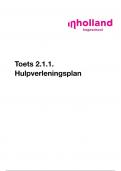Samenvatting
Summary Atomic Structure Notes with Labelled Diagrams
- Vak
- Instelling
- Boek
Detailed Atomic Structure Notes fully typed with labelled diagrams. Combination of revision guides, teacher notes, exam hints and past paper questions. Written with concise layout using the Cornell Method. Notes from an A* student. Whole chapter. 16 pages (not inc. cover page) 50p a page.
[Meer zien]














